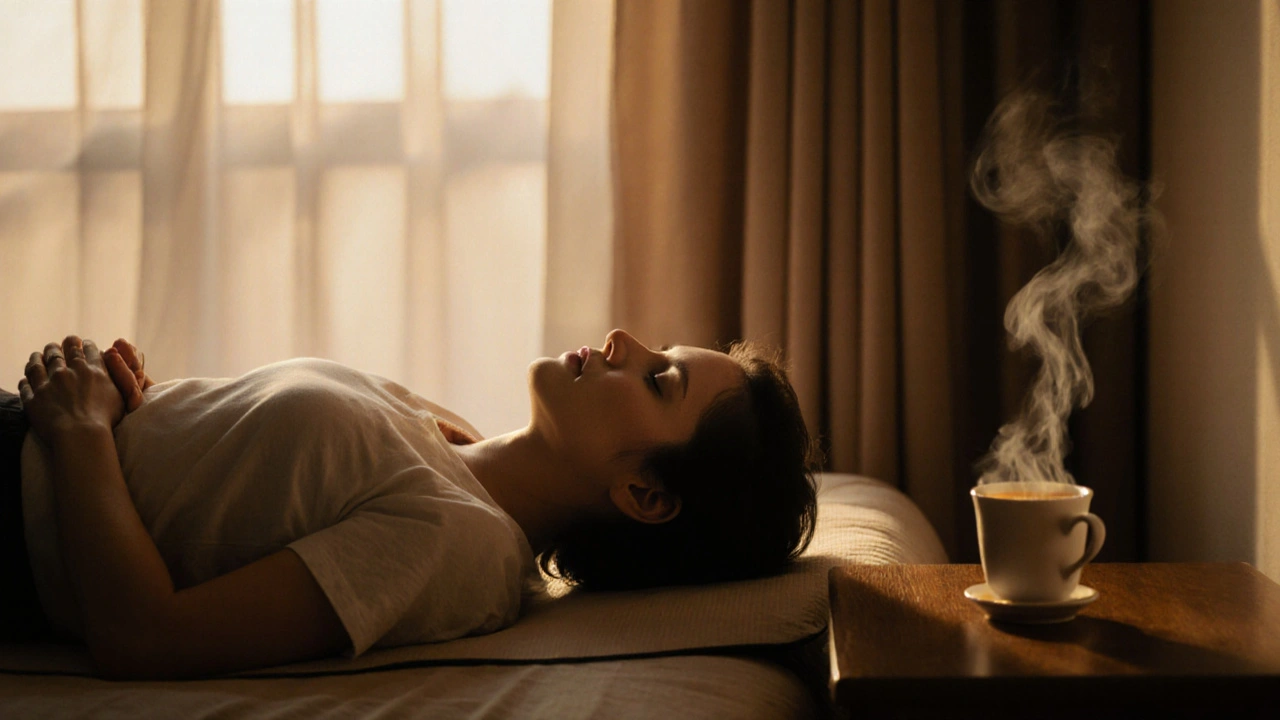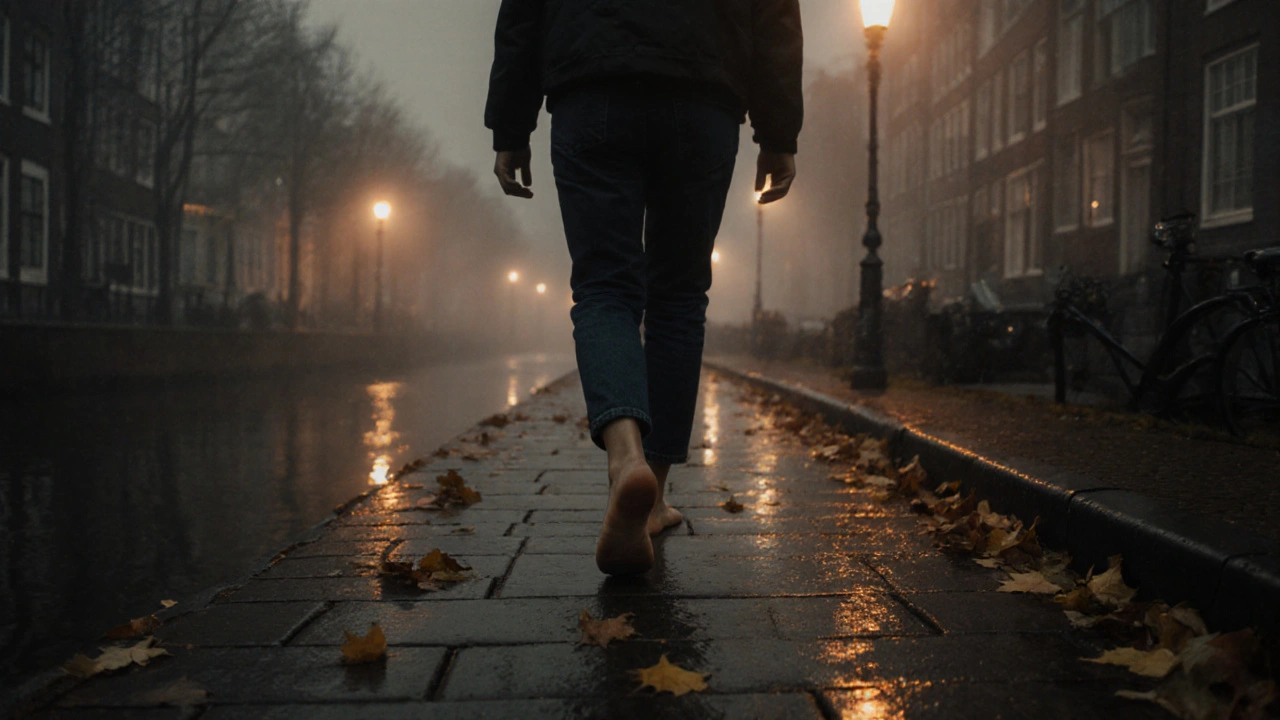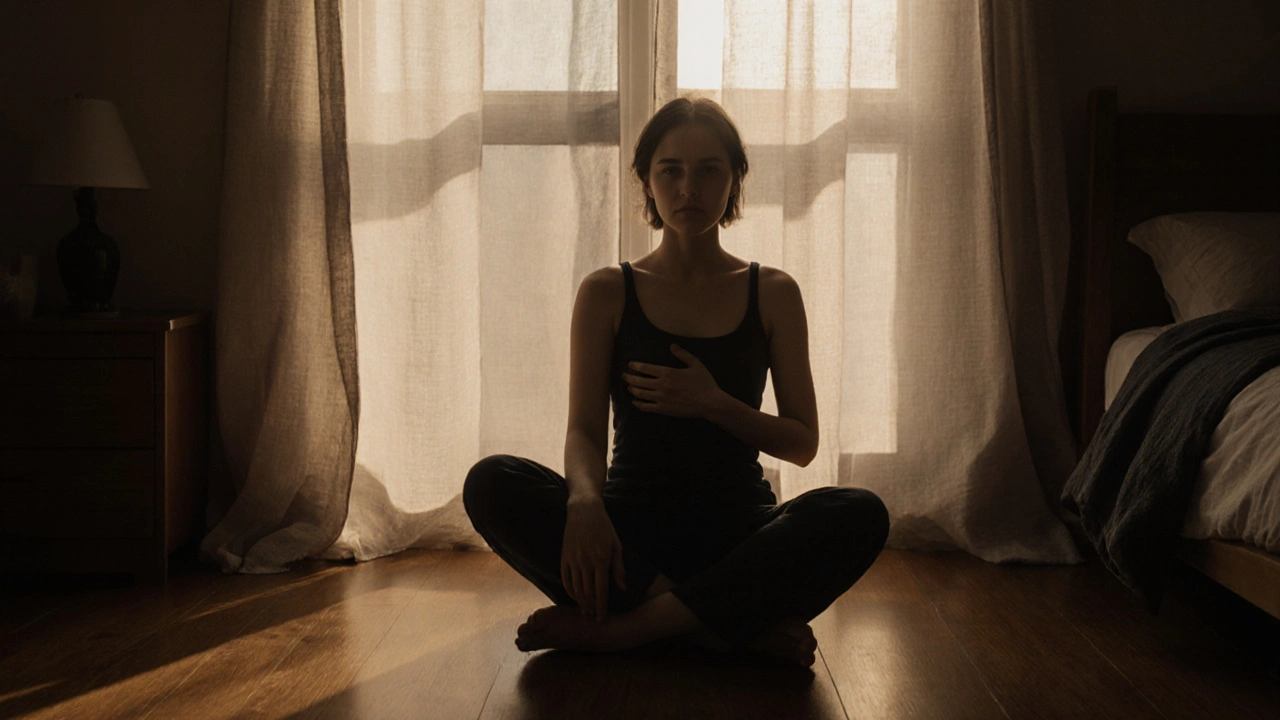Tantra and Mindfulness: How to Cultivate Presence and Awareness in Daily Life

You’ve probably heard the word tantra tossed around in spas, yoga studios, or even pop culture - often wrapped in mystery, sensuality, or exoticism. But what if tantra isn’t about what you think it is? What if it’s not about sex, rituals, or mystical chants - but about something far more ordinary, and far more powerful: being fully here?
Here’s the truth: tantra and mindfulness aren’t opposites. They’re partners. Both are ancient tools for waking up from autopilot. Both ask you to stop rushing, stop judging, and start feeling - right now, in this body, in this breath.
What Tantra Really Is (And Why It’s Not What You Think)
Tantra comes from Sanskrit roots meaning "to weave" or "to expand." It’s not a religion. It’s not a set of secret techniques for better sex (though that can be a side effect). At its core, tantra is a practice of awakening awareness through the body, breath, and sensation.
For centuries, tantric traditions in India and Tibet taught that energy - not just thought - holds wisdom. Your heartbeat, the warmth in your palms, the way your shoulders drop when you sigh - these aren’t distractions. They’re gateways. Tantra says: don’t escape the body to find peace. Find peace in the body.
That’s where mindfulness steps in. Mindfulness is the simple act of noticing what’s happening without trying to change it. Tantra gives you the map. Mindfulness gives you the compass.
Why This Combination Works Better Than Either Alone
Most mindfulness practices ask you to sit still, focus on the breath, and watch thoughts pass like clouds. Great - if you’re already calm. But if you’re stressed, anxious, or numb? Sitting still can feel impossible.
Tantra helps here. It invites you to move, feel, touch, and explore - gently. A tantric practice might involve slow hand movements, eye gazing, or paying attention to the rise and fall of your ribs as you breathe. These aren’t performances. They’re invitations to reconnect with your physical self.
Think of it like this: mindfulness is learning to hear your thoughts. Tantra is learning to feel your body’s whispers. Together, they turn noise into clarity.
One woman I knew in Amsterdam - a teacher who worked 12-hour days - started with just five minutes of mindful breathing. It helped. But she still felt disconnected. Then she tried a simple tantric exercise: placing her hands on her belly and breathing slowly while noticing warmth, tension, or movement. Within two weeks, she said, "I finally felt like I lived in my body again. Not just visited it."
How to Start Practicing Tantra and Mindfulness Together
You don’t need candles, incense, or a guru. You just need five minutes and the willingness to be curious.
- Find a quiet spot. Sit or lie down. No phone. No distractions.
- Close your eyes. Take three slow breaths. In through the nose. Out through the mouth.
- Bring attention to your feet. Feel the weight. The texture of your socks. The pressure against the floor. Don’t change anything. Just notice.
- Move your awareness slowly up your body. Ankles. Calves. Knees. Thighs. Each area, pause. Breathe. Feel.
- When your mind wanders (it will), gently return. No judgment. Just return.
This is a tantric mindfulness scan. It takes five minutes. It’s not about relaxation - it’s about reconnection.
Try this daily for a week. Notice what changes. Maybe you catch yourself sighing more. Maybe you notice tension in your jaw before it becomes a headache. That’s awareness. That’s the point.
Common Misconceptions (And Why They Hold You Back)
Let’s clear up a few myths:
- "Tantra is about sex." Not inherently. Sexual energy is one form of life force - yes. But tantra teaches you to channel energy, not just release it. Many tantric practices are completely non-sexual.
- "Mindfulness is just meditation." Meditation is one tool. Mindfulness is a way of living - noticing your coffee’s warmth, the sound of rain, the way your child’s voice changes when they’re tired.
- "I need special training." You don’t. You just need curiosity. The most powerful tantric moments happen in quiet kitchens, during walks, or while washing dishes.
The biggest barrier? Believing you have to "do it right." There’s no perfect tantric experience. There’s only your experience - messy, awkward, beautiful, and yours.

What to Expect When You Begin
At first, it might feel strange. You might notice things you’ve ignored for years: a tightness in your chest when you’re anxious. A numbness in your hands after typing. A habit of holding your breath when you’re stressed.
That’s not failure. That’s data.
After a few weeks, you might find yourself pausing before reacting. Maybe you catch yourself snapping at someone - and instead of reacting, you take a breath. Maybe you notice the sunset while walking to the tram. These aren’t big moments. But they’re the ones that change your life.
One man in Utrecht told me: "I used to rush through meals. Now I taste the salt on my bread. I didn’t realize how much I’d been missing."
Tantra and Mindfulness in Everyday Moments
You don’t need a retreat to practice. Here’s how to weave it into your routine:
- Brushing your teeth? Feel the bristles. Taste the mint. Notice the rhythm.
- Waiting in line? Feel your feet on the ground. Notice your breath. Don’t pull out your phone.
- Listening to someone? Look into their eyes. Don’t plan your reply. Just listen.
- Walking? Feel the air on your skin. Hear the birds. Notice the weight shifting in your hips.
These aren’t exercises. They’re invitations. Tiny moments where you choose presence over distraction.
How This Changes Relationships
When you’re more present, you stop projecting. You stop assuming. You start seeing people - not just your ideas about them.
Tantra teaches you to hold space - for yourself, and for others. Mindfulness teaches you to stay in that space without running.
Imagine sitting with your partner. Not talking. Not fixing. Just being. Feeling the warmth between you. Not needing to say anything. That’s intimacy - not the kind you see in movies. The real kind.
One couple I met in Amsterdam said their fights dropped by 70% after just two weeks of daily 5-minute breath awareness together. Not because they fixed their problems. Because they stopped reacting to them.

What Happens When You Stick With It
After months of this practice, people report things like:
- Less anxiety, even in chaos
- Deeper sleep
- More patience with themselves
- Greater sense of calm in crowded places
- Feeling more alive - even on ordinary days
This isn’t magic. It’s neurobiology. When you train your nervous system to stay present, it stops staying stuck in fight-or-flight mode. Your body learns: you are safe right now.
And that changes everything.
Tantra vs. Mindfulness: What’s the Difference?
| Aspect | Mindfulness | Tantra |
|---|---|---|
| Primary Focus | Mental awareness: observing thoughts, emotions | Physical awareness: sensing energy, sensation, breath |
| Typical Practice | Sitting meditation, body scans, mindful breathing | Slow movement, touch, eye gazing, breathwork with sensation |
| Goal | Non-judgmental awareness | Awakening life force through embodiment |
| Best For | Overthinkers, anxious minds | Disconnected bodies, numbness, emotional suppression |
| Overlap | Both require presence, non-judgment, and attention to the present moment | |
The truth? You don’t have to choose one. They’re two sides of the same coin. Mindfulness helps you notice what’s happening. Tantra helps you feel it in your bones.
Frequently Asked Questions
Is tantra religious?
No. While tantra has roots in Hindu and Buddhist traditions, modern tantric practices are secular. You don’t need to believe in any deity or doctrine. It’s about direct experience - what you feel in your body, right now.
Do I need a partner to practice tantra?
Absolutely not. Most tantric practices are done alone. Partner work is optional and often comes later. Solo practice builds the foundation: learning to be present with yourself first.
Can tantra help with trauma or anxiety?
Yes - but carefully. Tantra helps reconnect with the body, which is often where trauma is stored. But if you’re dealing with deep trauma, work with a trained therapist who understands somatic practices. Tantra isn’t a replacement for therapy - it’s a powerful complement.
How long until I feel the benefits?
Some people feel calmer after one session. Real change - deeper presence, less reactivity - usually shows up after 2-4 weeks of daily 5-10 minute practice. Consistency matters more than duration.
Is this just a trend?
Mindfulness has been studied for decades. Tantra has been practiced for over 1,500 years. What’s new is the combination - and the fact that people are finally tired of spiritual bypassing. They want real, embodied change. This isn’t a trend. It’s a return.
Ready to Begin?
You don’t need to travel to India. You don’t need expensive courses. You don’t need to change your life - just your attention.
Start today. Right now. Take one slow breath. Feel your feet. Notice the air on your skin. That’s it. That’s the whole practice.
The world will keep rushing. But you? You can choose to be here - fully, softly, quietly present. And that, more than anything, is the real magic of tantra and mindfulness.

Michelle McCulley
October 31, 2025 AT 22:00Chris Crimmins
November 1, 2025 AT 16:04Prabha Chaudhary
November 2, 2025 AT 12:20Matt Kay
November 4, 2025 AT 08:12Lashawn Darden
November 5, 2025 AT 09:12Janey Doe
November 6, 2025 AT 18:47Pranto Rahman
November 7, 2025 AT 16:41Pranav Brahrunesh
November 9, 2025 AT 02:45